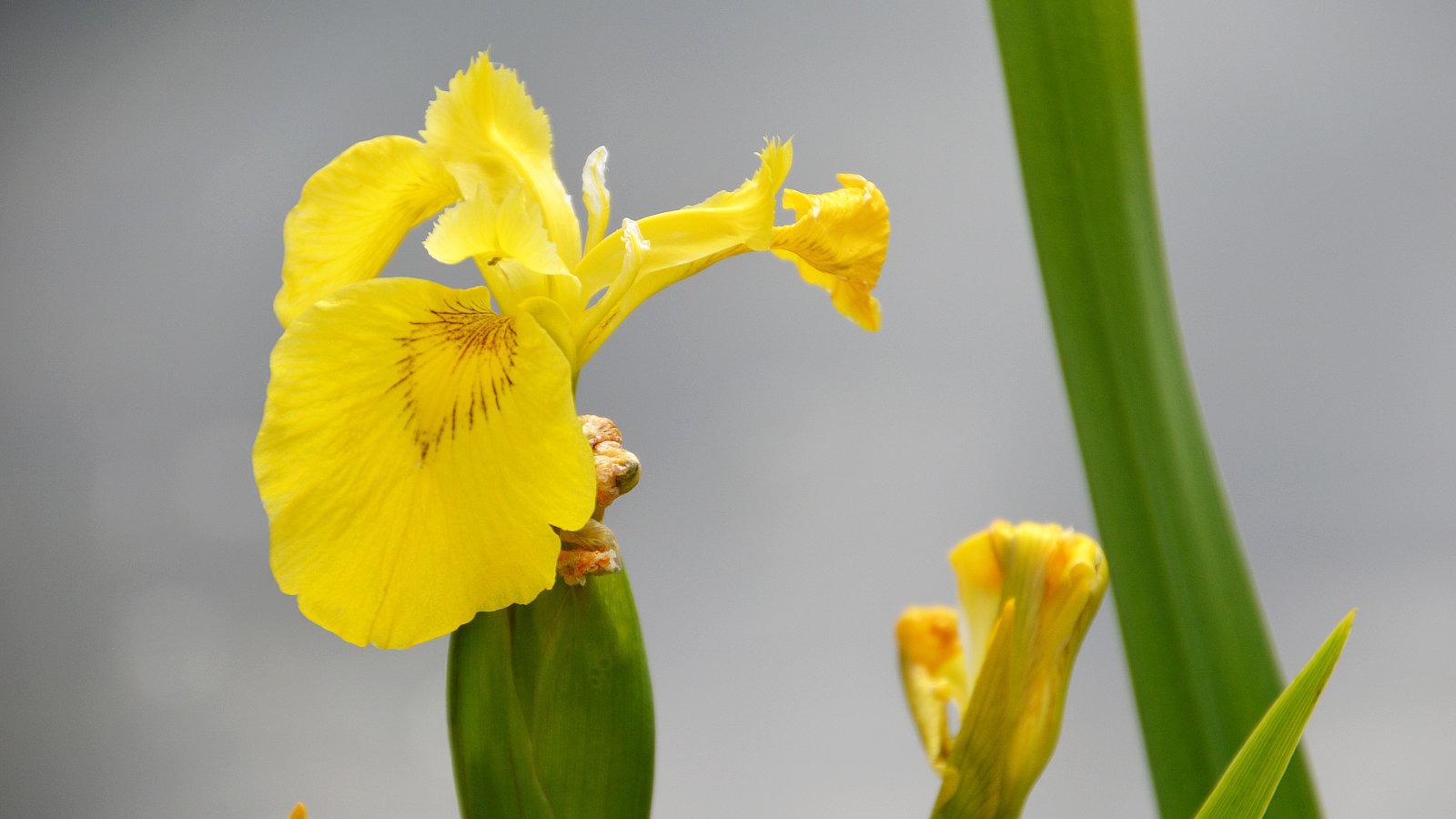Walk through a wetland habitat, riverbank or even around your local pond and you may well come across this handsome looking plant. Nestled amongst the green reeds, its bright yellow flowers will probably catch your eye, which makes it easy to identify. This wild plant charms everyone with its bright, showy, yellow flowers, which bloom from May to July. As the yellow flag can grow so tall, the flowers can reach up to 10cms in diameter, standing out from the crowd like a big yellow beacon, or flag, hence its name! The leaves of this aquatic prominent are sharp, like pampas grass so watch out when handling as you may come a cropper!
Latin name: Iris pseudacorus
Identification
Plant Height: 50-180cms
Leaves: The leaves average between 50-90cms in length and 3cms in diameter. Long, dark green, strap shaped and numerous from the plants base.
Flowers: Large and bright yellow, roughly 5-10cms across. These flowers have longevity and flower late into the season. The stem usually bares 4-10 buds throughout the growing period.
Habitat found: Found in marshy and waterlogged habitats, associated with reed bed, marshland and garden ponds!
Flowering time: May – July
Attracts: Dragonflies, damselflies, bees, wasps and moths

In the garden
This species grows quite happily on sunny or partly shaded sites and is known to help remove metals from the soil. Keep an eye on it though as it is a vigorous grower and can become widespread around the pond both by rhizome and water aided seed dispersal, which can survive dry periods in the garden. As it likes to grow in a wet environment, it can also live quite happily being submerged and grows best at a low pH.
Did you know?
In folk medicine, the rhizome of yellow flag was looked upon as something of a cure-all tuber, being used to treat coughs, convulsions, toothache, diarrhoea, cramp, and as an antidote to poisoning. The yellow flag has also been used in water treatment as it has the ability to absorb heavy metals from the soil or body (it was said)! The brilliant yellow flowers were also used to make yellow dye and its tuber like rhizomes to make black but its little used now for dying garments.